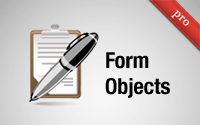Categories
- Active Record
- Active Resource
- Active Support
- Administration
- Ajax
- APIs
- Authentication
- Authorization
- Background Jobs
- Caching
- Code Walkthrough
- Controllers
- Debugging
- Deployment
- eCommerce
- Forms
- Mailing
- Models
- Performance
- Plugins
- Production
- Rack
- Rails 2.0
- Rails 2.1
- Rails 2.2
- Rails 2.3
- Rails 3.0
- Rails 3.1
- Rails 3.2
- Rails 4.0
- Refactoring
- Routing
- Search
- Security
- Testing
- Tools
- Views
Applied Filters:
model x
Model Caching (revised)
Caching at a low level is a great option when the view is too dynamic to cache and you need something flexible that can work anywhere in the application. Here I show a variety of ways to use Rails.cache with Active Record.
(12 minutes)
Nested Model Form (revised)
Handling multiple models in a single form is easy with accepts_nested_attributes_for. Here you will also learn how to add and remove nested records through JavaScript.
(11 minutes)
Form Objects
Models have a tendency to become a complex mess as an application grows. In this episode you will learn a couple of techniques to extract form-behavior out into its own class.
(18 minutes)
Model Name in URL (revised)
A model's ID in the URL is not very helpful to the user. Consider adding the name which can also improve SEO. Learn how to override to_param, add a slug attribute, and make a catch all route for deep nesting.
(9 minutes)
Active Model Serializers
The ActiveModel::Serializers gem can help you build JSON APIs through serializer objects. This provides a dedicated place to fully customize the JSON output.
(10 minutes)
Nested Model Form Part 1
Handling multiple models in a single form is much easier with the accepts_nested_attributes_for method. See how to use this method to handle nested model fields.
(11 minutes)
Nested Model Form Part 2
Add and remove nested model fields dynamically through JavaScript using either Prototype or jQuery.
(12 minutes)
Public Activity
Learn how to easily add a user activity feed using the public_activity gem. Here I show both the default setup using model callbacks and a manual way to trigger activities.
(10 minutes)
Active Model
In Rails 3 the non-database functionality of Active Record is extracted out into Active Model. This allows you to cleanly add validations and other features to tableless models.
(6 minutes)
Service Objects
Models can quickly become a grab-bag of unrelated methods if behavior is constantly being pushed from the controller. Here I show how to refactor this using Concerns and Service Objects.
(12 minutes)










